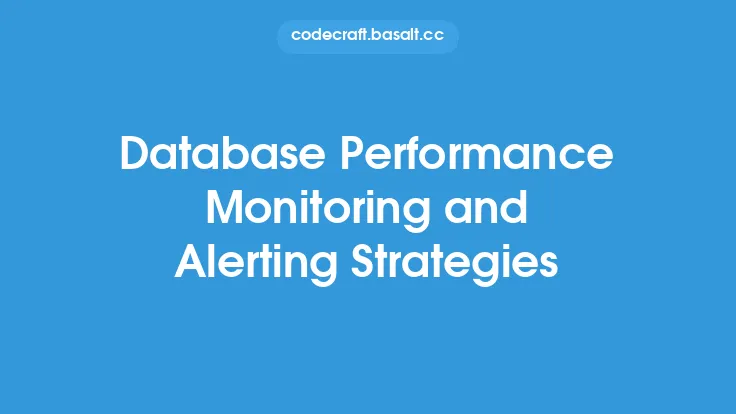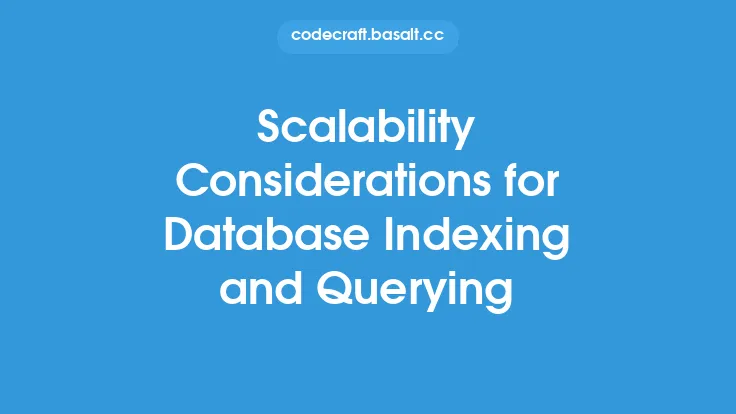Measuring and analyzing database performance bottlenecks is a crucial step in ensuring the optimal functioning of a database system. A bottleneck in a database refers to a component or process that limits the overall performance of the system, causing it to slow down or become unresponsive. Identifying and addressing these bottlenecks is essential to improve the efficiency, reliability, and scalability of the database.
Introduction to Database Performance Bottlenecks
Database performance bottlenecks can occur due to various reasons, including hardware limitations, poor database design, inefficient queries, and inadequate configuration. Some common causes of bottlenecks include disk I/O contention, CPU bottlenecks, memory constraints, and network latency. To identify and analyze these bottlenecks, database administrators (DBAs) and developers need to use various tools and techniques, such as performance monitoring, benchmarking, and profiling.
Identifying Performance Bottlenecks
Identifying performance bottlenecks in a database involves collecting and analyzing data on various system metrics, such as CPU usage, memory utilization, disk I/O rates, and network traffic. DBAs can use built-in database tools, such as SQL Server's Dynamic Management Views (DMVs) or Oracle's Automatic Workload Repository (AWR), to collect this data. Additionally, third-party tools, such as database monitoring software, can provide more detailed and real-time information on system performance.
Analyzing Performance Bottlenecks
Once the data is collected, DBAs need to analyze it to identify the root cause of the bottleneck. This involves examining the data to determine which component or process is causing the bottleneck. For example, if the data shows high CPU usage, it may indicate a CPU bottleneck, which could be caused by inefficient queries or inadequate indexing. On the other hand, if the data shows high disk I/O rates, it may indicate a disk I/O bottleneck, which could be caused by poor database design or inadequate storage configuration.
Common Database Performance Bottlenecks
Some common database performance bottlenecks include:
- Disk I/O bottlenecks: These occur when the disk subsystem is unable to keep up with the demand for data, causing queries to slow down or timeout.
- CPU bottlenecks: These occur when the CPU is unable to process queries quickly enough, causing a backlog of requests.
- Memory bottlenecks: These occur when the database runs out of memory, causing queries to slow down or fail.
- Network bottlenecks: These occur when the network is unable to transmit data quickly enough, causing queries to slow down or timeout.
- Lock contention bottlenecks: These occur when multiple transactions are competing for the same resources, causing delays and timeouts.
Tools and Techniques for Measuring and Analyzing Performance Bottlenecks
DBAs can use various tools and techniques to measure and analyze performance bottlenecks, including:
- Performance monitoring tools: These tools provide real-time information on system performance, allowing DBAs to identify bottlenecks quickly.
- Benchmarking tools: These tools allow DBAs to simulate workload and measure system performance under different conditions.
- Profiling tools: These tools provide detailed information on query execution plans, allowing DBAs to identify inefficient queries and optimize them.
- Database logging: This involves collecting and analyzing log data to identify performance issues and bottlenecks.
Best Practices for Measuring and Analyzing Performance Bottlenecks
To effectively measure and analyze performance bottlenecks, DBAs should follow best practices, such as:
- Regularly monitoring system performance to identify potential bottlenecks early.
- Using a combination of tools and techniques to get a comprehensive view of system performance.
- Analyzing data carefully to identify the root cause of the bottleneck.
- Implementing changes and testing their impact on system performance.
- Continuously monitoring system performance to ensure that the bottleneck has been resolved and to identify new potential bottlenecks.
Conclusion
Measuring and analyzing database performance bottlenecks is a critical step in ensuring the optimal functioning of a database system. By identifying and addressing bottlenecks, DBAs can improve the efficiency, reliability, and scalability of the database, leading to better user experience and increased productivity. By using various tools and techniques, following best practices, and staying informed about the latest developments in database performance, DBAs can ensure that their databases run smoothly and efficiently, even in the face of increasing workload and complexity.





